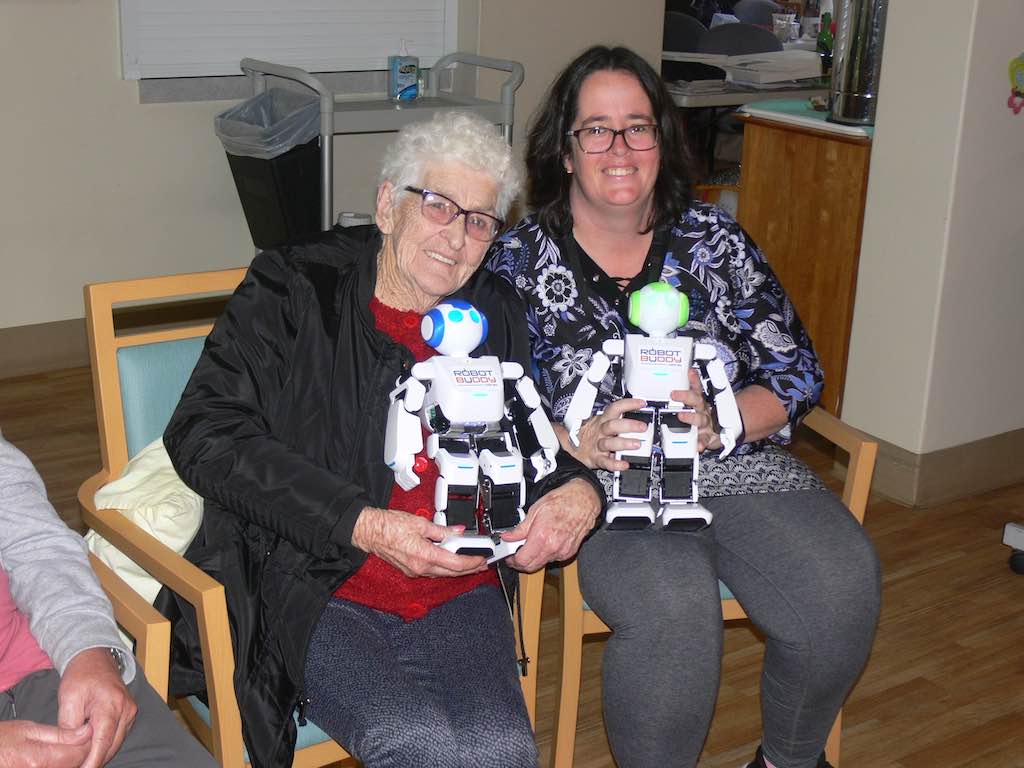Small cute robots appeal to many older people. They provide many of the benefits of pet animals without needing the same amount of care. And they can be switched off at will.
Coleen Wright runs Robot Buddy, a business that takes dancing robots into residential care homes to entertain and equally important to encourage residents to take some exercise by dancing and singing along with the robots.
“Our goal was to develop an Australian low cost, easy-to-use robotics therapy for aged care and dementia patients.
“In the last six months we have conducted over 40 sessions in aged care facilities across Perth with a great response,” she said.
“Typically a session involves up to 30 residents. We bring along three or more robots who are pre-programmed with appropriate music and dance sequences for maximum engagement and set them up in a common area.”
Ms Wright plays popular songs of the sixties and seventies and she and the robots dance in time to the tunes. Residents are encouraged to join in both by singing along and by moving whatever part of their bodies works best in time with the music.
“The sessions run for about an hour as we’ve found that is perfect for both battery life for robots and energy levels of patients.”
Ms Wright said Robot Buddy was suitable for all aged people with or without dementia.
“Most residents get involved with the performance and dementia patients in particular respond positively in ways that carers rarely see.
“Our sessions show that residents benefit from this type of therapy, as those who are normally unable to communicate, engage with our robots, mimic movements, sing along to songs and increase social engagement.
“This activity improves the quality of life of the residents, as they are exercising and often reminisce about cherished memories.
In a performance at Rise Network aged care residence, Mount Richon, witnessed by Have a Go News, both Aboriginal and white residents were equally enthralled by Robot Buddy and residents of different cultures interacted well.
“Our therapy also benefits carers by easing the burden of care, assisting with social interactions, general entertainment and allowing more one-on-one time with each patient,” she said.
One of Robot Buddy’s co-founders has a family member who is living with dementia. This was a key motivation for the family to look for ways to bring some joy into their life.
Ms Wright first sourced more than 20 robots from many different countries and tested these for hundreds of hours for durability, reliability, suitability and ease-of-use. She also visited an international robotics expo in Japan in November 2017 to see the latest trends in robotics and aged care.
Most robots are designed for Asian markets. They cost up to $30,000 each and require a high level of technical expertise to use. Moreover the makers provide little or no support in English.
Robot Buddy sessions cost around $130 per hour including supplying the robots, pre-programming and running the sessions.
“We update content on a regular basis to provide new and stimulating therapy for patients and we handle all technical support to further assist staff in aged care facilities.
“We are continually working to improve our robots and in conjunction with a robotics PhD student from the University of WA. We are further developing our own software system and will begin testing these with aged care residents in the next 12 months,” she said.
Ms Wright has carried out no formal evaluation of Robot Buddy, however research studies of similar robot-senior interactions carried out by University of Sydney scientists have been extremely positive.
“I just see people enjoying themselves, talking, moving, sometimes getting up and dancing and recalling something from their past,” she said.



































